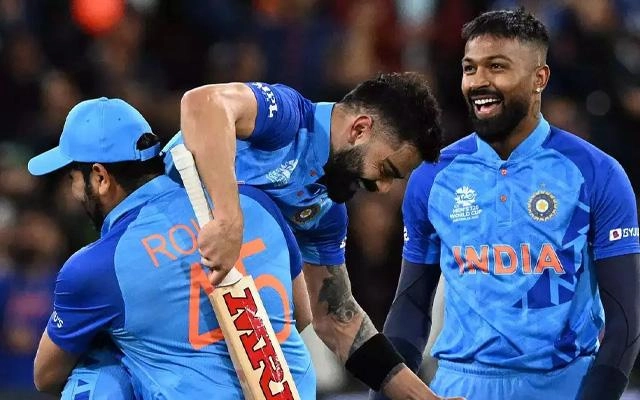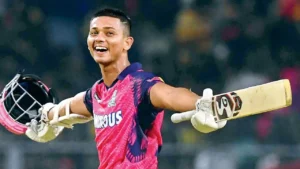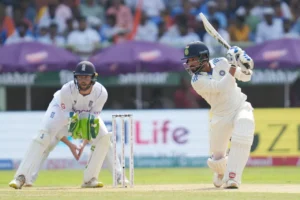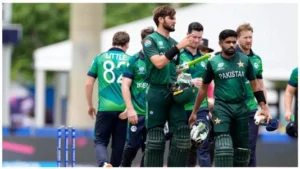India’s T20 World Cup Squad – Striking the right balance?

India’s selectors have opted for experience over youthful exuberance in their T20 World Cup squad. While the team boasts proven performers, questions remain about their ability to adapt to the ever-increasing scoring rates in T20 cricket.
Strengths – India’s T20 World Cup Squad
- Bowling Spearhead: Jasprit Bumrah’s presence provides India with arguably the most complete fast bowler in the world.
- Spin Duo Reunites: The reunion of Kuldeep Yadav and Yuzvendra Chahal offers a potent spin attack capable of troubling any batting lineup.
- Suryakumar’s Return: The return of the explosive Suryakumar Yadav bolsters the middle order with his innovative strokeplay.
- Kohli in Form: Virat Kohli’s resurgence in the IPL, with 500 runs and an improved strike rate, is a welcome sign.
- Experienced Captain: Rohit Sharma’s leadership qualities and experience will be crucial.
Weaknesses – India’s T20 World Cup Squad
- Lack of All-rounders: Unlike teams like Australia, India lacks impactful all-rounders who can contribute significantly with both bat and ball.
- Pandya’s Uncertain Form: Hardik Pandya, the lone pace-bowling allrounder and vice-captain, has been selected based on past performance rather than current form.
- Hitting Power Deficit: The squad lacks players renowned for ruthless hitting in the death overs.
- Pace Bowling Concerns: Mohammed Siraj’s inconsistency and Arshdeep Singh’s struggles at the death raise concerns about the pace attack, especially with the injured Mohammed Shami unavailable.
- Average Fielding: The overall fielding unit lacks athleticism compared to other top teams.
Opportunities – India’s T20 World Cup Squad
- Building on ODI World Cup Success: After a dominant run in the ODI World Cup that ended in a narrow final defeat, this team has a chance to redeem itself and win its second T20 World Cup title.
Threats – India’s T20 World Cup Squad
- Finishing Woes: The team lacks proven finishers who can consistently take them over the line in close chases.
- Top-Order Repetitiveness: The top order remains largely unchanged from previous T20 World Cup squads that failed to win the title. This raises concerns about a lack of fresh strategies.
- Lower Order Reliance: The tail-enders might not be able to contribute much with the bat, putting undue pressure on the middle order.
- Top-Order Vulnerability: Batsmen with high strike rates can put pressure on the lower order if they lose wickets early.
- Rohit’s Form Concerns: Though experienced, Rohit Sharma’s recent form adds a layer of uncertainty to the top order.
Additional Considerations
- Impact of Replacement Players: Injuries can play a significant role in T20 tournaments. The form and abilities of the reserve players will be crucial if they are called upon to replace key players in the starting XI.
- Team Chemistry and Strategy: The team’s ability to gel together quickly, adapt their strategies to different opponents and conditions, and execute their plans flawlessly will be a major factor in determining their success.
By carefully navigating these strengths, weaknesses, opportunities, and threats, India can create a winning formula for the T20 World Cup. However, they will need to address their shortcomings and adapt to the ever-evolving landscape of T20 cricket to claim the coveted trophy.
Final Squad as Announced
Rohit Sharma (c), Hardik Pandya (vc), Yashasvi Jaiswal, Virat Kohli, Suryakumar Yadav, Rishabh Pant (wk), Sanju Samson (wk), Shivam Dube, Ravindra Jadeja, Axar Patel, Kuldeep Yadav, Yuzvendra Chahal, Arshdeep Singh, Jasprit Bumrah, Mohammed Siraj
Reserve Players
Shubman Gill, Rinku Singh, Khaleel Ahmed, Avesh Khan




Pingback: Mayank Yadav's Injury Update - The Return of Abdominal Pain - Cricket Info